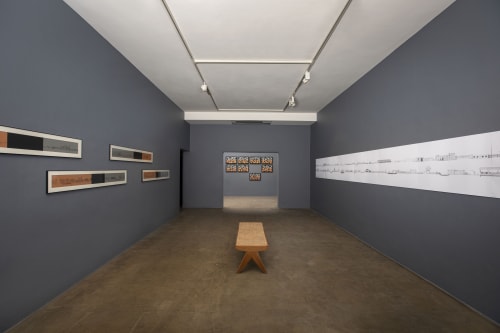When Jasmine Nilani Joseph was a young girl living in Jaffna, Sri Lanka, during the three-decade-long civil war, her parents and siblings were forced out of their home and into the city of Vavuniya, where they lived in a refugee camp and later settled under a housing scheme project. With her family still living in Vavuniya, Joseph now returns to Jaffna to pursue the arts where living alone in the city of her ancestors fills her with nostalgia and anxiety, even as yesterday’s distress masks itself as today’s volition. As the ruptures of post-colonial communalism threatened an identity of place in war-torn Sri Lanka leaving behind a traumatic legacy of disrepair and dislocation, Joseph expounds on the cataclysms of memory as an archival tool from which the haunted remnants of self-hood can be reconsidered alongside collective bodies of hope.
In the geographical remoteness of Jaffna, Joseph’s solo movements additionally resound with generational separation, distanced as she is from her family and dream home as well as instinctive notions of belongingness and celebration from before the dislocation. These fraught experiences have framed heartfelt and important reflections on how the idea of family develops and sustains through wounding, displacement and distance. She intensifies such contextual parameters of individual identity by tying together times and places; in other words, by merging temporality with site-specificity she presents communal traumas as an assemblage of personal histories rendering space to be a dynamic, politicized extension of the bodies that presently or absently constitute it. Moreover, conceptions of mobility over-ride Joseph’s narratives – how ideas, images and objects travel; how moving images can be depicted; and how movements can be explored as a subset of physical history and shared temporality. By approaching collectivism through fragmentation, Joseph’s narratives deconstruct history as a source of multiple experiences and truths in the contemporary moment.
Joseph is a skilled draughtsman; her mark-making couples a meditative pointillism with an incisive linearity creating charged impressions of spaces and then juxtaposing them against a quieting neutrality. The distinguishable linearity of her compositions grows out of a conceptual apprehension of the fence as a marker of separatism but also connection, where the animated protrusion of the fence operates within the dialectic of the inside–outside, adhering to the cognitive and physical separation of spaces while also bringing their seeming unendingness into the fold. For Joseph, the fence exists in materiality offering geographical identification, and also exists as a figment of the imagination; its metaphorical character reveals a barrier to be overcome by culture or tradition, or an individual’s own growth. Her practice leans into the textuality of drawing as an expression of abstract ideas by contouring the surface as the primary incision and improving the ability to document perception. Unconsciously working within the diagrammatic traditions of Sri Lankan architecture, where local, climate-based adaptions of Western construction are presented in linear formations bringing nature closer to home, Joseph further explores the building as a manifestation of the human spirit. In detailing the interactions between architectural forms and their surroundings, she presents diaristic examples on ideas of dwelling while politicizing the nature of home. Yet, at its core, Joseph’s narrative compositions remain hugely personal. In spite of the magnitude of distress she experienced in her early life, she somehow returns to the family and home as notional concepts that supersede their physical envelopment and can be embraced willfully and whole-heartedly through reorientations.
Winner of the Asia Society Art Game Changer Awards India in 2022, Jasmine Nilani Joseph is an emerging artist from Sri Lanka, whose practice includes drawing, hybrid sculptures and animation videos. In her much-awaited solo exhibition titled The Sixth Diary, Joseph embodies the intersection of the personal–historical and cites a version of events from her point of view as the sixth, and youngest, member of her family. Through endurances and experiments with drawing, The Sixth Diary establishes a fresh and evocative perspective rendering the journalistic inquiry in and of the self as a valuable archive of the contextual natures of person.

